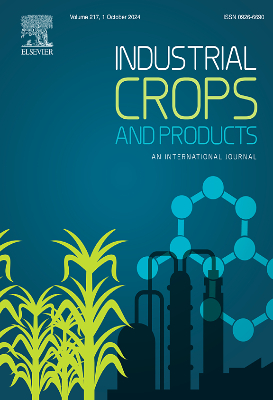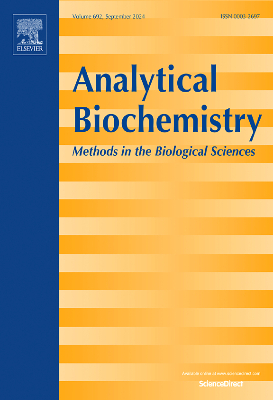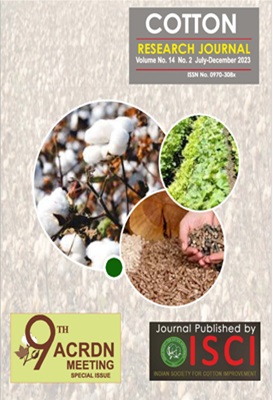Description
Industrial Crops and Products is an international journal publishing research on cultivated plants (crops) of industrial interest (non-food, non-feed). Papers concern both crop-oriented and bio-based materials research. It should be of interest to an international audience, hypothesis driven, and repeatable. Crops and products of interest include: fiber, forest, and energy crops, industrial oilseeds, rubber and resins, and cultivated medicinal and aromatic plants. The plant(s) in the manuscript must fit our definition of industrial crops, before it is classified further in research topics as indicated below. Research on food, phytochemistry, ethnobotany, and medicine are not in the scope of the journal. Authors should make clear in the cover letter how the research fits our scope following the detailed scope description below. The following are examples of research that fits within the scope of the journal: 1. Industrial crop management practices to increase productivity and specific chemical components. Including cultural practices (sowing, plant density, fertilization, pruning, shading, management of wild stands for sustainable harvest, pests and weed management, harvest, post-harvest, etc.). 2. Breeding and genetics of cultivated industrial crops. The research must be of international interest and hypothesis driven. The research must be of value to other breeders and the germplasm developed must be available to other researchers for further genetic improvement. 3. Response of cultivated industrial crops to abiotic (temperature, water, salinity, pH, heavy metals, etc.) and biotic stresses (insects, diseases, weeds). 4. Sustainable cropping systems including an industrial crop to reduce negative environmental impacts of conventional cropping systems. For example, cultivation in marginal lands, intercropping, double or relay cropping, cover cropping or other systems intended to minimize soil erosion, eutrophication, greenhouse gases emissions, loss of biodiversity, etc. 5. New techniques for the propagation of industrial crops or production of metabolites in vitro (root and tissue culture, micropropagation). 6. Discovery or development of new industrial crops is in the scope, but must include an evaluation of the real potential to make a plant an industrial crop, not just information on plants gathered in natural habitats (many plants make products, but they will not become a crop). An economic analysis may be included as appropriate. 7. Extraction methods of metabolites from industrial crops and waste streams of industrial crops processing (non-food related). 8. Biochemical and thermochemical conversion of lignocellulosic biomass. 9. Bio-based materials: Fiber and fiber compounds: cellulose-, hemicelluloses-and lignin-based products, textiles, nanofibers, composites, films, etc. Other crop-polysaccharides based materials such as carbohydrates and proteins-based products not intended for the food industry (adhesives, varnishes, paints, etc.) Rubber, waxes, resins, gums from crops Polymers from crops 10. Crop and forestry biorefinery: Energy crops: fuel (bioethanol, biogas, syngas), biochar, chemicals, etc. Oils, fatty acids, biofuels (biodiesel, jet fuel, drop-in fuels), and chemicals derived from oilseed crops 11. Biologically active compounds: Insecticides, herbicides, fungicides, and pharmaceuticals (the species has to fit our definition of industrial crop; cultivated plants or plants with demonstrated potential to be cultivated with non-food purposes) Essential oils: inks, dyes, lubricants, perfumes, cosmetics, plastics, and other industrial applications 12. Bio-based products must be tied to specific crops/plants, and their modification to meet new industrial uses. For instance, for nanoparticles, a direct link is required with an industrial crop or with the respective value-chain. 13. In the manuscript, all species must include the Latin name and Authority, the first time the species is mentioned in the abstract or text. Research not in the scope of the journal: 1.Field or horticultural crops and products which main use is food, functional food, or nutraceutical. Some crops might have both an industrial and food use. For example rapeseed (Brassica napus L.), if the work is directed to industrial rapeseed (biodiesel, jet fuel) fits the scope; but if it is a canola type with main use as food; then is not in the scope, same for other oilseeds (sunflower, safflower), sugar crops( sugarcane, sugarbeet), and others. 2. Non-plant research or non-plant derived products, for instance animal, algae, fungi, microorganisms, and minerals. For example: honey, propolis, chitosan, graphene, etc. are not in the scope. 3. Genetic, phytochemical, molecular characterization or screening of plant species collected in their natural habitat or a local set of genotypes of a species with or without potential to become a cultivated industrial crop. 4. In vitro antioxidant activity characterization with indirect methods (DPPH, ABTS, FRAP or ORAC) of plants or plant parts without proof of biological activity. Antioxidant activity is present in all plants and thus is meaningless without additional data. 5. Edible films and food/feed related antioxidant activity. 6. Ethnobotany, ethnopharmacology, pharmacology, and phytochemistry. 7. Development of analytical methods of metabolites. 8. Valorization and metabolite extraction of waste streams from food industry (peels, seeds, pomace, coffee grounds, vegetables processing, etc.).











